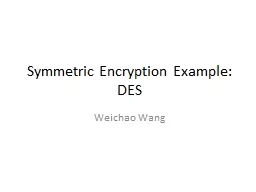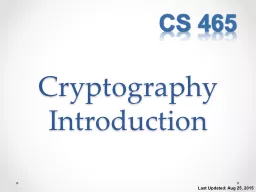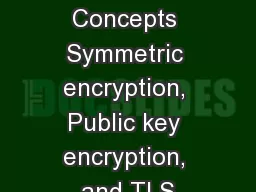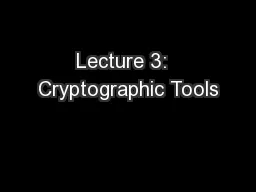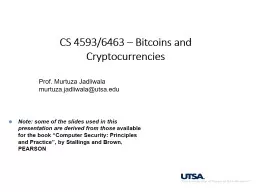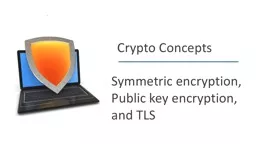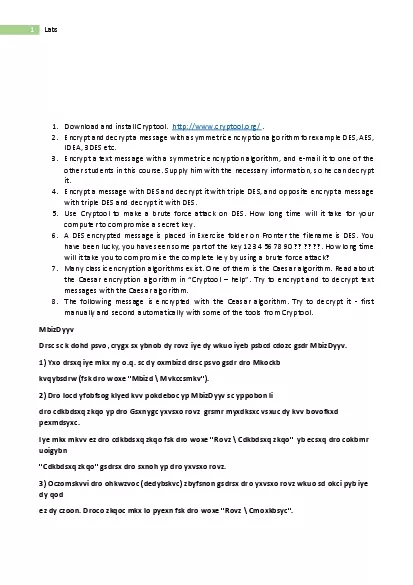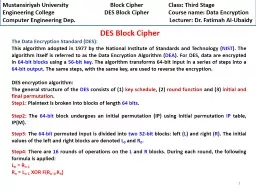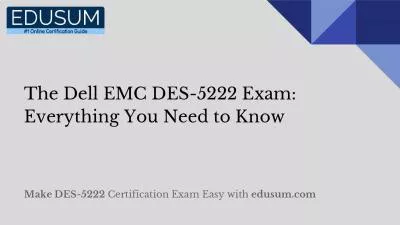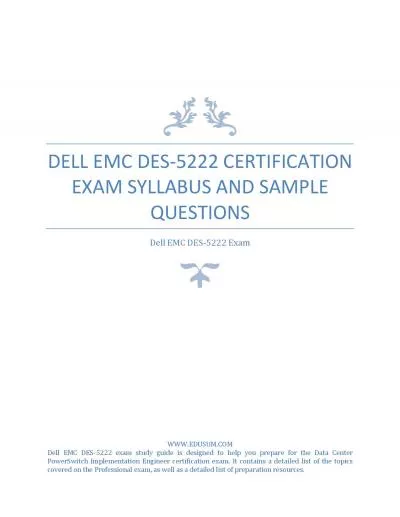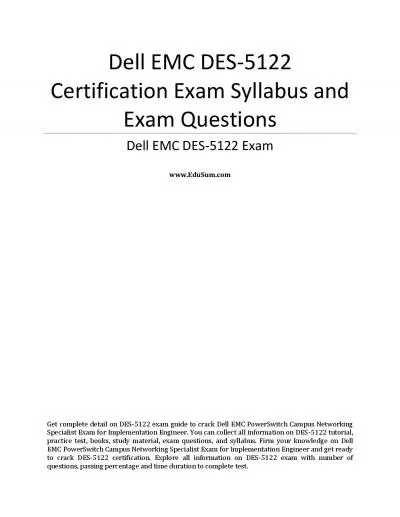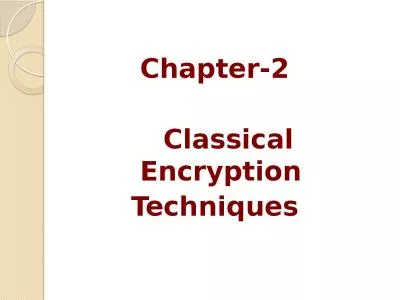PPT-Symmetric Encryption Example: DES
Author : trish-goza | Published Date : 2018-02-26
Weichao Wang 2 Overview of the DES A block cipher encrypts blocks of 64 bits using a 64 bit key outputs 64 bits of ciphertext A product cipher basic unit is the
Presentation Embed Code
Download Presentation
Download Presentation The PPT/PDF document "Symmetric Encryption Example: DES" is the property of its rightful owner. Permission is granted to download and print the materials on this website for personal, non-commercial use only, and to display it on your personal computer provided you do not modify the materials and that you retain all copyright notices contained in the materials. By downloading content from our website, you accept the terms of this agreement.
Symmetric Encryption Example: DES: Transcript
Download Rules Of Document
"Symmetric Encryption Example: DES"The content belongs to its owner. You may download and print it for personal use, without modification, and keep all copyright notices. By downloading, you agree to these terms.
Related Documents

